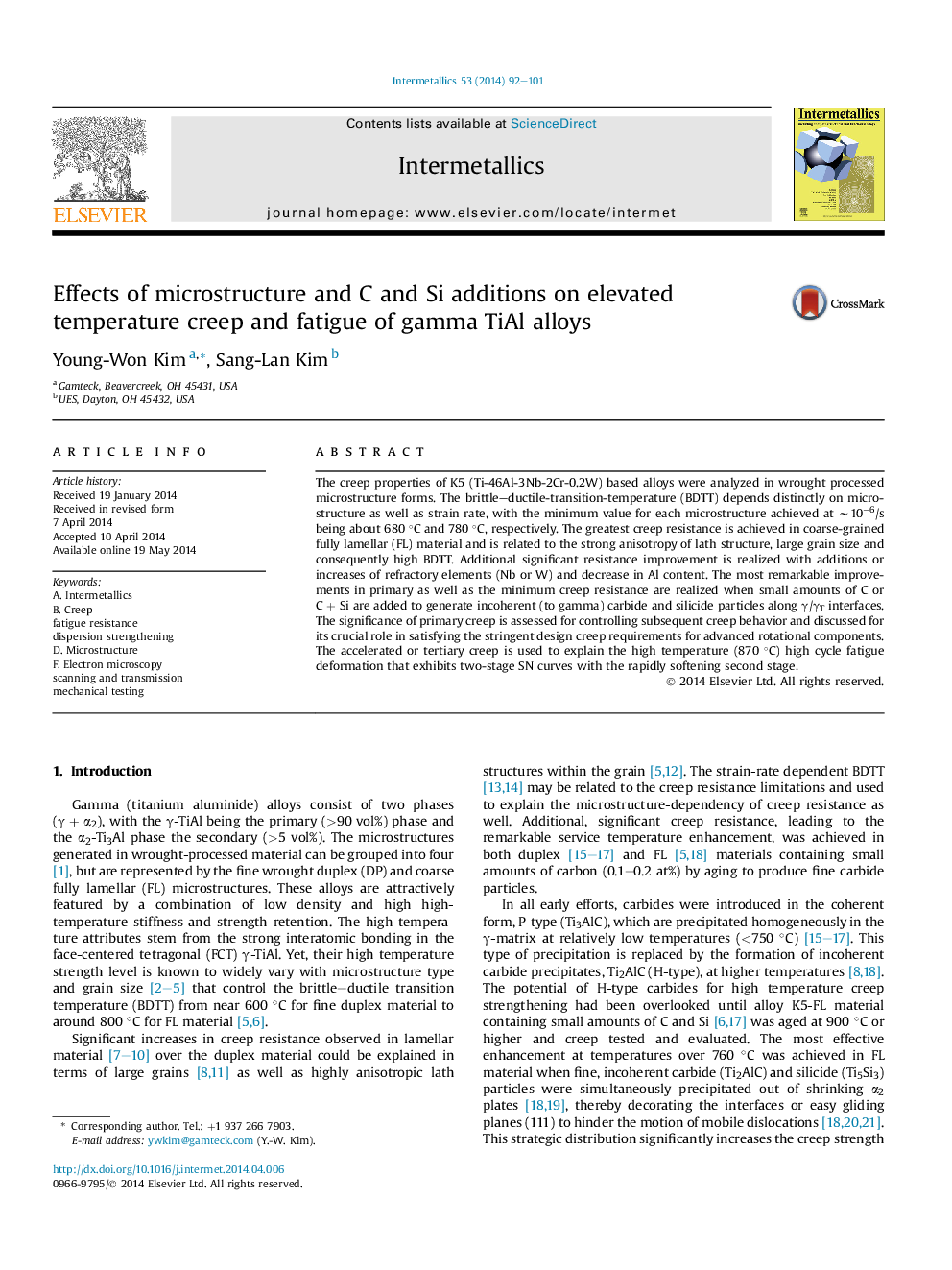| Article ID | Journal | Published Year | Pages | File Type |
|---|---|---|---|---|
| 1599937 | Intermetallics | 2014 | 10 Pages |
Abstract
The creep properties of K5 (Ti-46Al-3Nb-2Cr-0.2W) based alloys were analyzed in wrought processed microstructure forms. The brittle-ductile-transition-temperature (BDTT) depends distinctly on microstructure as well as strain rate, with the minimum value for each microstructure achieved at â¼10â6/s being about 680 °C and 780 °C, respectively. The greatest creep resistance is achieved in coarse-grained fully lamellar (FL) material and is related to the strong anisotropy of lath structure, large grain size and consequently high BDTT. Additional significant resistance improvement is realized with additions or increases of refractory elements (Nb or W) and decrease in Al content. The most remarkable improvements in primary as well as the minimum creep resistance are realized when small amounts of C or C + Si are added to generate incoherent (to gamma) carbide and silicide particles along γ/γT interfaces. The significance of primary creep is assessed for controlling subsequent creep behavior and discussed for its crucial role in satisfying the stringent design creep requirements for advanced rotational components. The accelerated or tertiary creep is used to explain the high temperature (870 °C) high cycle fatigue deformation that exhibits two-stage SN curves with the rapidly softening second stage.
Keywords
Related Topics
Physical Sciences and Engineering
Materials Science
Metals and Alloys
Authors
Young-Won Kim, Sang-Lan Kim,
